|
Banned
|
|
Posts: 18,452
Country: 
Star Sign: 
Join Date: May 2011
Gender: 
|
|
|
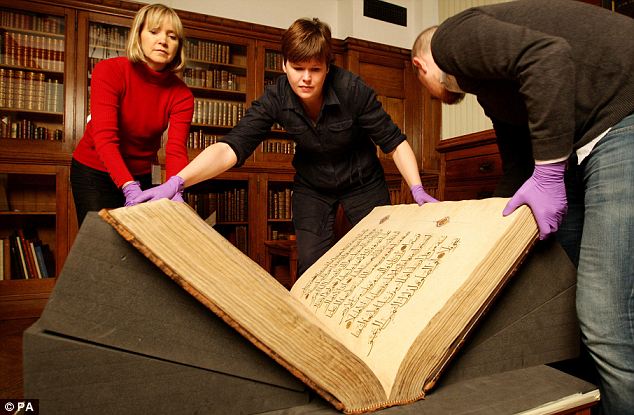
MANCHESTER: The hand-written 500 years old Holy Quran is to be published online. The University of Manchester's experts are in process to publish the book online by using digital technology. The book in fragile condition and is consist of 470 pages. The book is kept in the University of Manchester’s John Rylands Library. The size of each page is 35in by 24in. Historians have different estimations about the written history of the book ranging from the second half of the 14th century to 1500.
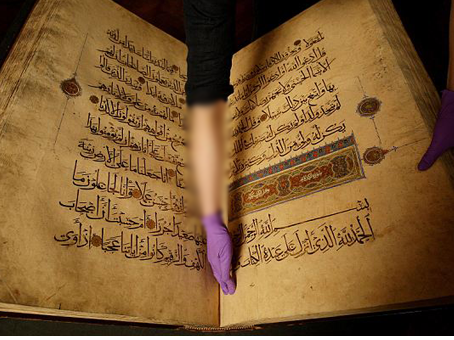
The ornate book was written by several scribes and illuminators for Kansuh al-Ghuri, the penultimate Mameluke sultan of Egypt. The paper it is written on was made from bombycine, a silken fabric which after sizing is polished with smooth stones so that the ink sits on the surface rather than being absorbed (similar in properties to vellum).
Historians disagree on when it was written, with estimates ranging from the second half of the 14th century to 1500.
It was kept in the sultan’s library in Cairo and was eventually acquired by the Earl of Crawford. Known as the Rylands Qur’aan of Kansuh al-Ghuri, it has two missing pages, or leaves, which were discovered in the 1970s at the Chester Beatty Library in Dublin.
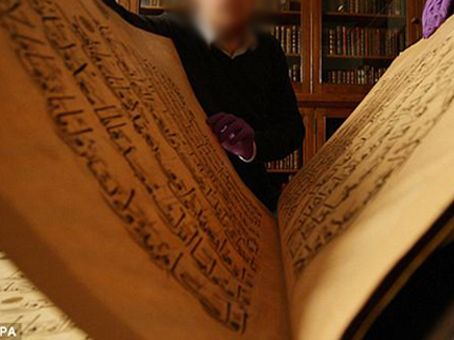
Now experts at the University of Manchester’s John Rylands Library are using digital technology to photograph each page and publish the book online to enable scholars and students to study it.
Analysis of the digital images should aid scholars to date the manuscript more accurately. The missing pages will also be captured in digital images and reunited with the book on the internet.
At least 950 images will be captured – which will be between 80 and 120MB each – allowing their study in intricate detail.
It will eventually be freely available for research, teaching and learning using Turning the Pages technology on a dedicated website.
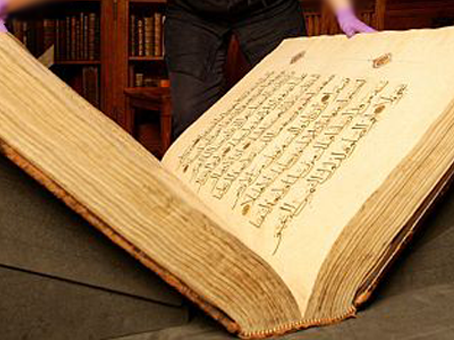
Project manager Carol Burrows, collection and research support manager at the John Rylands Library, said: ‘Because of its size and weight, reading room access has been severely restricted to all but a handful of scholars. It cannot be used in exhibitions, seminars or public close-ups.
‘It will certainly be challenging to photograph this enormous manuscript, as it is too large and heavy for the equipment we normally use.
‘However, we have constructed dedicated equipment which will achieve this aim.’
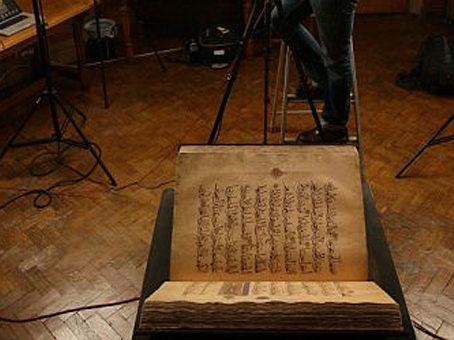
Dr Andreas Christmann, senior lecturer in Islamic Studies at the University’s school of Arts, Histories and Cultures said: ‘Although one of the biggest assets of the John Rylands Library, this Qur’aan has not been available for either research or teaching because of its delicate state.
‘We know it represents one of the finest, most lavishly illuminated and calligraphically significant Qur’aan manuscripts from the late Mamluk period.
‘Because of its time of writing – 14th or 15th century – it bridges the gap in chronicling Qur’aanic calligraphy between the late classical period – 9th-12th century and the early modern period – 16th-18th century.
‘By digitizing the entire manuscript and adding the missing chapters it will produce an almost complete Qur’aanic manuscript of magnificent size and splendid craftsmanship.
‘I’m delighted, scholars, including students of my class in Qur’aanic Studies, will have free access to studying this text, which will provide a great stimulus for further research into Qur’aanic calligraphy.’
Last edited by Abewsha; 09-15-2011 at 02:35 AM..
|




 Show Printable Version
Show Printable Version
 Email this Page
09-15-2011, 02:03 AM
Email this Page
09-15-2011, 02:03 AM






 Show Printable Version
Show Printable Version
 Email this Page
09-15-2011, 02:06 AM
Email this Page
09-15-2011, 02:06 AM

 Show Printable Version
Show Printable Version
 Email this Page
09-15-2011, 02:15 AM
Email this Page
09-15-2011, 02:15 AM

 Show Printable Version
Show Printable Version
 Email this Page
09-15-2011, 02:18 AM
Email this Page
09-15-2011, 02:18 AM

 Show Printable Version
Show Printable Version
 Email this Page
09-15-2011, 02:21 AM
Email this Page
09-15-2011, 02:21 AM

 Show Printable Version
Show Printable Version
 Email this Page
09-15-2011, 02:24 AM
Email this Page
09-15-2011, 02:24 AM

 Show Printable Version
Show Printable Version
 Email this Page
09-15-2011, 02:36 AM
Email this Page
09-15-2011, 02:36 AM

 Show Printable Version
Show Printable Version
 Email this Page
09-15-2011, 02:37 AM
Email this Page
09-15-2011, 02:37 AM

 Show Printable Version
Show Printable Version
 Email this Page
09-15-2011, 02:38 AM
Email this Page
09-15-2011, 02:38 AM

 Show Printable Version
Show Printable Version
 Email this Page
09-15-2011, 02:39 AM
Email this Page
09-15-2011, 02:39 AM


 Similar Threads
Similar Threads